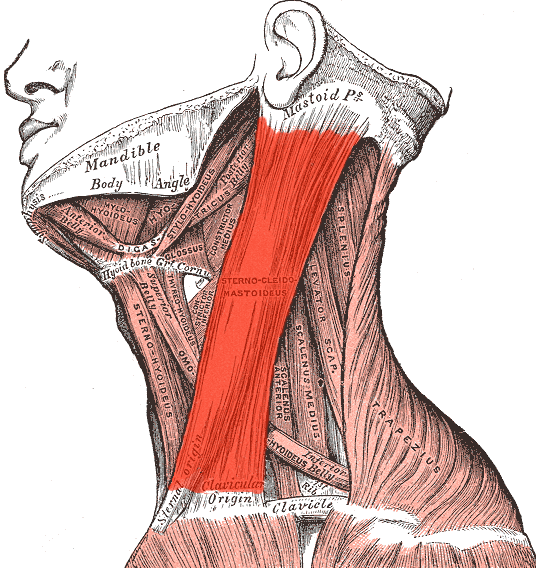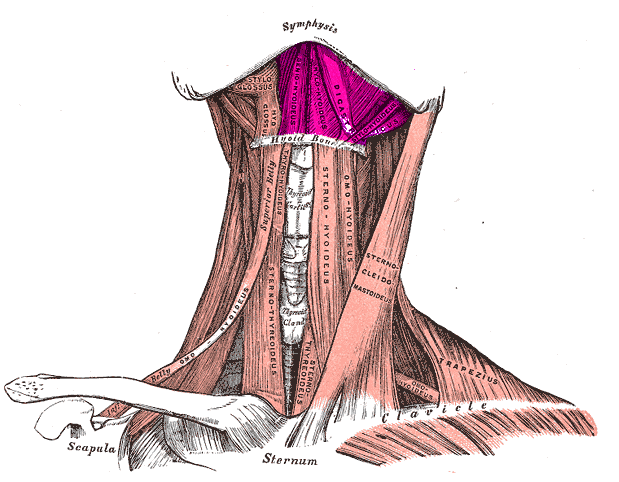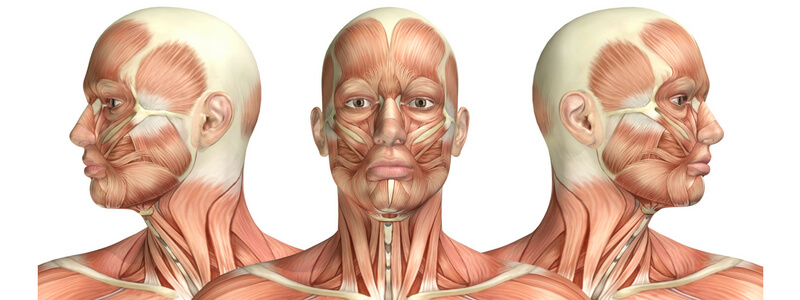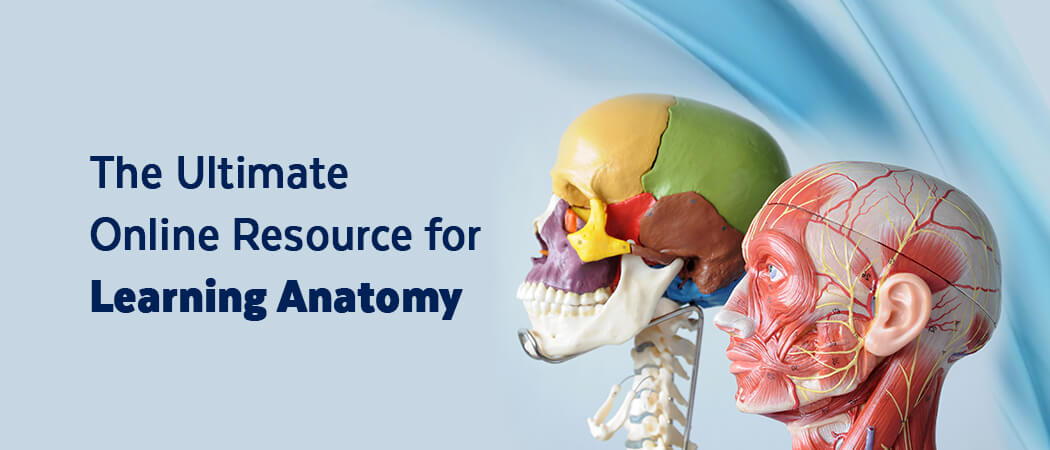Test your knowledge of head and neck anatomy with these questions.
1. The sternocleidomastoid muscle inserts into which of the following anatomical points?
A. Medial third of the clavicle
B. Lateral third of the clavicle
C. Body of the sternum
D. Xiphoid process
E. Middle third of the clavicle
Show Answer
Answer: A. Medial third of the clavicle
Sternocleidomastoid is a large, superficial muscle that is situated on the side of the neck. Sternocleidomastoid originates from the lateral surface of the mastoid process of the temporal bone and the lateral half of the superior nuchal line. It has two heads, the sternal head and the clavicular head:
- The sternal head inserts into the anterior surface of the manubrium of the sternum
- The clavicular head inserts into the medial third of the clavicle

The sternocleidomastoid muscle highlighted in red (adapted from Gray’s Anatomy by Uwe Gille)
2. Which of the following is one of the suprahyoid muscles? Select ONE answer only.
A. Digastric
B. Sternohyoid
C. Sternothyroid
D. Thyrohyoid
E. Omohyoid
Show Answer
Answer: A. Digastric
The suprahyoid muscles are four muscles that are located above the hyoid bone in the neck. They are:
- The digastric muscle
- The stylohyoid muscle
- The geniohyoid muscle
- The mylohyoid muscle
These four muscles have different individual actions but in general assist with elevation of the hyoid bone and widening of the oesophagus during swallowing.

The suprahyoid muscles highlighted in pink (adapted from Gray’s Anatomy by Mikael Häggström)
3. The inferior thyroid artery arises from which of the following arteries? Select ONE answer only.
A. External carotid artery
B. Internal carotid artery
C. Thyrocervical trunk
D. Brachiocephalic trunk
E. Thyroid ima artery
Show Answer
Answer: C. Thyrocervical trunk
The thyroid gland secretes hormones directly into the bloodstream and is therefore a highly vascular gland. The arterial supply to the thyroid gland is from the following arteries:
- Superior thyroid artery (branch of the external carotid artery) – supplies the superior and anterior portions of the gland
- Inferior thyroid artery (branch of the thyrocervical trunk) – supplies the inferior and posterior portions of the gland
- Thyroid ima artery (branch of the brachiocephalic trunk in most people) – supplies the anterior isthmus in approximately 10% of the population
Venous drainage is via the superior, middle, and inferior thyroid veins, which together form a venous plexus. The superior and middle thyroid veins drain into the internal jugular veins whilst the inferior thyroid vein drains into the brachiocephalic vein.
4. The maxillary artery arises from the external carotid artery at which of the following points?
A. Behind the neck of the mandible
B. Between the ramus of the mandible and sphenomandibular ligament
C. In the submandibular gland
D. In the pterygopalatine fossa
E. In the jugular foramen
Show Answer
Answer: A. Behind the neck of the mandible
The maxillary artery supplies the deep structures of the face. It is derived from the external carotid artery and arises behind the neck of the mandible. It is initially embedded in the substance of the parotid gland and then passes forward between the ramus of the mandible and sphenomandibular ligament into the pterygopalatine fossa. It can be divided into mandibular, pterygoid, and pterygopalatine portions.

The maxillary artery and its branches (from Grays’ Anatomy)
5. Lymph from the posterior tongue drains into which of the following lymph nodes?
A. Superficial cervical nodes
B. Deep cervical nodes
C. Submental nodes
D. Submandibular nodes
E. Inferior cervical nodes
Show Answer
Answer: B. Deep cervical nodes
Lymphatic drainage of the tongue is as follows:
- The tip of the tongue – drains to the submental nodes
- The lateral anterior tongue – drains to the submandibular nodes
- The central anterior tongue – drains to the inferior cervical nodes
- The posterior tongue – drains to the deep cervical nodes
For thousands more anatomy tutorials and questions visit: www.anatomyprep.co.uk
Header image used on licence from Shutterstock







Good
good knowledge
Very good
Nice
Very nice method of explanation.
Very nice explanation
Well explanatory and detailed
So good
Excellent guide
Nice
good